![https://adoptoprod.blob.core.windows.net/article/ZNs3FZqJ6UWe2Wcg7D4Tow.png]()
Ensure safe return to work after COVID-19
As the government’s Job Retention Scheme, most commonly known as furlough leave, draws to a close, companies will have much staff returning to work after an extended period away.
From July, companies can invite furloughed workers to return on a part-time basis, and on 31 October the scheme will finish, which will see many furloughed workers returning to work.
Post COVID-19 return to work guidelines for employers
Welcoming back your workforce after such a period of upheaval will need careful planning. Here are a few points to consider as your staff begins returning to work after furlough:

Guideline #1: Communicate clearly
Perhaps most importantly, ensure that you are being clear and direct in all communications. This has been a time of uncertainty for many, and people who have been furloughed may be fearful of their job security and financial security.
Therefore, when you know your plan for bringing back workers, communicate clearly and effectively to ensure that returning workers feel involved and kept up to date with the company strategy. Keeping them informed of the decisions you’ve made in a timely fashion will help them feel valued and part of the wider team.
Having considered what is best for your company, you may be phasing in different teams or groups of workers over a period of time, or you may invite all furloughed workers to begin work again on the same date.
Whenever you have a starting date for specific employees, let them know this date with as much notice as you can provide. Remember that they may need time to prepare for their return. Many workers may have new responsibilities of care or challenging schedules to contend with due to the pandemic.
They may be caring for children or family and with schools closed, and access to child care harder during this period, they will need as much notice as possible so that they have time to organize their situation, enabling them to return to work.
Guideline #2: Prepare your workplace
The rules on returning to work will vary depending on your individual businesses and sectors. It is important that you continue to monitor up to date government advice on this. Currently, the advice is that where possible, people should continue to work from home. In these instances, ensure that furloughed workers have all of the necessary equipment and relevant access requirements to any online systems needed for their role.
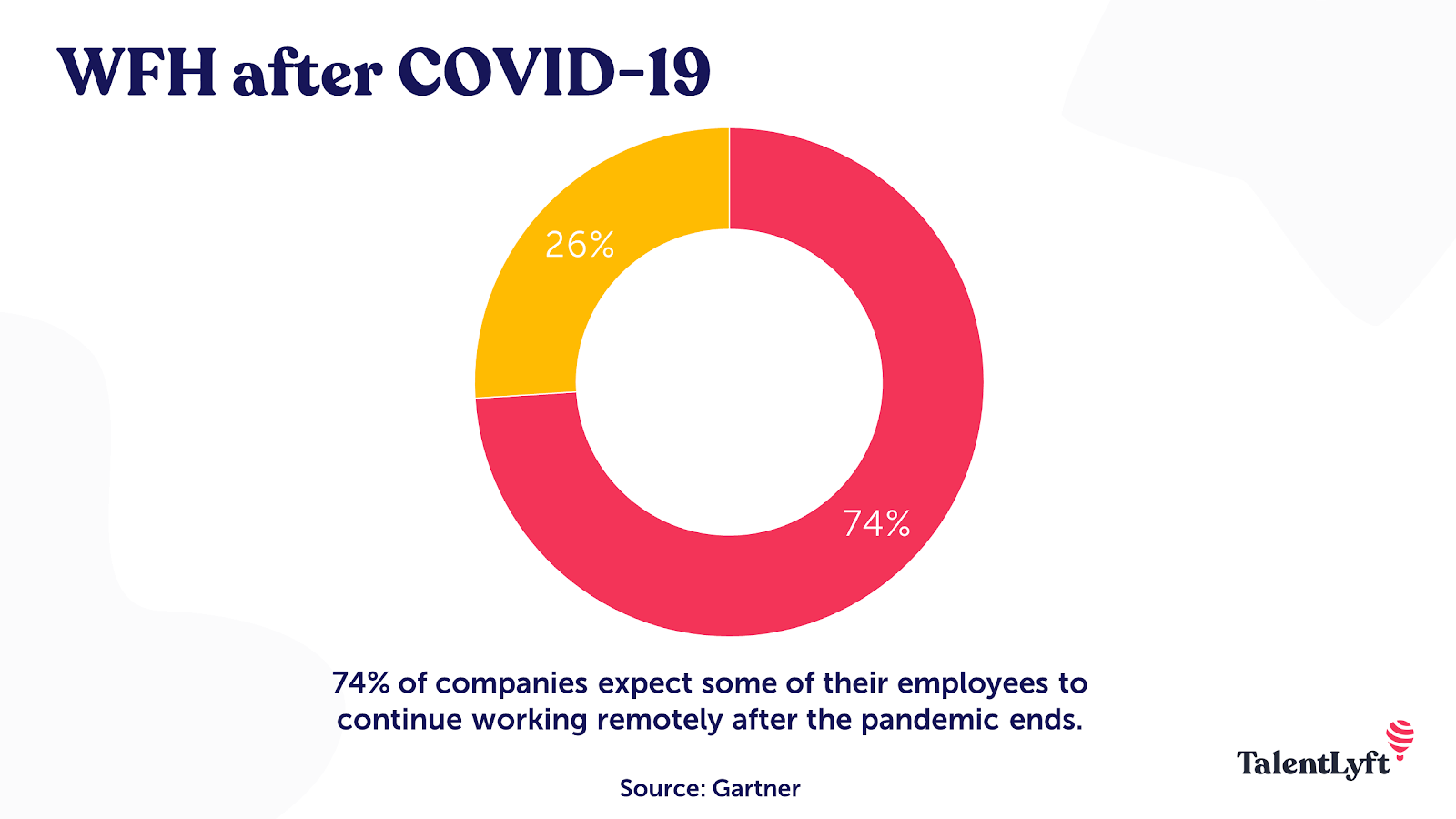
This may mean sending them specific equipment such as a company laptop if they don’t already have one. Make contact with them before their return to find out if they have any other needs or requirements in order for them to effectively switch to working from home, and send any necessary equipment ahead of their first day back.
Where it is not possible for employees to work from home, businesses need to undertake a thorough risk assessment to identify what measures you will need to put in place to protect your workers from the threat of COVID-19.
You’ll need to consider what changes you will have to make to ensure that the working environment is safe and in line with government guidelines. It is advised to do a deep clean ahead of re-opening and increasing the frequency that your premises get cleaned to ensure it is as safe and hygienic as possible for all workers.
You should provide hand sanitizers at various points in the workplace and encourage frequent hand-washing. You may need to put up perspex screens as many supermarkets have done at the tills, or move your office furniture to ensure people are abiding by the two-meter social distancing rule.
Once you have identified and implemented your new measures, you should share the results of the risk assessment with your employees, with any furloughed workers who will be returning, and on your website. Communicate what steps you are taking to ensure employee safety, and what people should do if they feel unwell in the workplace. Doing this will make your employee feel supported and protected.
Guideline #3: Listen to their concerns about returning
Make time to have an open conversation with your workers where they can express any concerns or fears they have about returning to work. It is important to remember it has been an unsettling time for those on furlough, and so ensure that you have someone they can talk to about returning to work, and that they know their needs are being considered.
This is a delicate period of transition, and some workers may have OCD or health anxiety which will have been exacerbated by this crisis, and they may find the prospect of returning to work very worryingly. Others may also be concerned about catching the virus and passing it on to vulnerable family members. A recent poll found two in five are anxious about returning to work after the coronavirus outbreak.
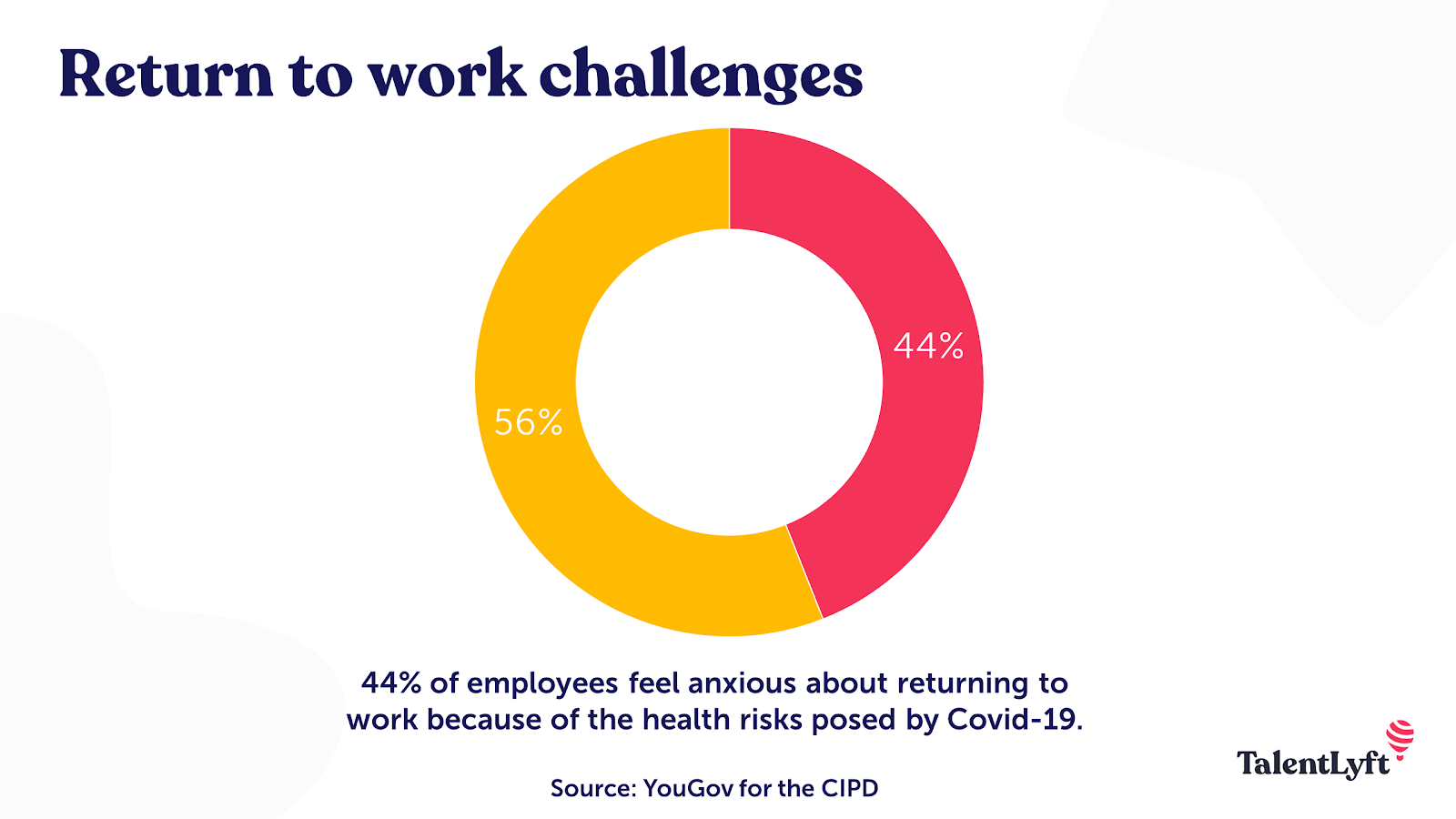
Do not dismiss these concerns; invite returning workers to tell you what they are. This can be done in different ways. For example, you may want to set up an anonymous feedback form that furloughed workers can fill in before their return, allowing them to freely and honestly highlight concerns they have, and solutions they may want to see put in place.
Some workers may be worried about their commutes and how they’ll get to work if they need to travel in, some may want assurance around PPE and will want to be given masks or gloves for protection where appropriate. Listen to their worries and let them know what steps you are taking to allay them. Some of these measures may be part of your risk assessment, which you can direct them to, letting them know what will be different in the workplace on their return.
Other points that arise may be things you have not considered, so take the time to look at these too and find solutions to ensure that your employees feel safe, protected and looked after as they return to work. This will make them feel more comfortable and help them readjust into the working world.
Guideline #4: Be more flexible in your approach
Set time aside for the returning workers to be able to speak to their managers. This will be a beneficial time for the manager to check in with individuals on a one to one basis, finding out how they’ve been, if their circumstances have changed at all, and if they need any additional support to make their return to work as smooth as possible.
For many, they will be contending with looking after children, having to shield because of their own underlying health conditions or to protect those that they live with, and some, unfortunately, will have been affected by bereavement due to COVID-19. This is a time to be personal and remember that each worker will have their own set of circumstances they are dealing with. Bear this in mind and be flexible with your working practices.
Now more than ever, workplaces will need to be flexible and adaptable to their workers. This situation has forced employers to consider alternative ways of working. Use these circumstances to be more creative in your approach, allow people the flexibility of adapting their work practices to suit their needs at this time. Trust them that they will get the work done.
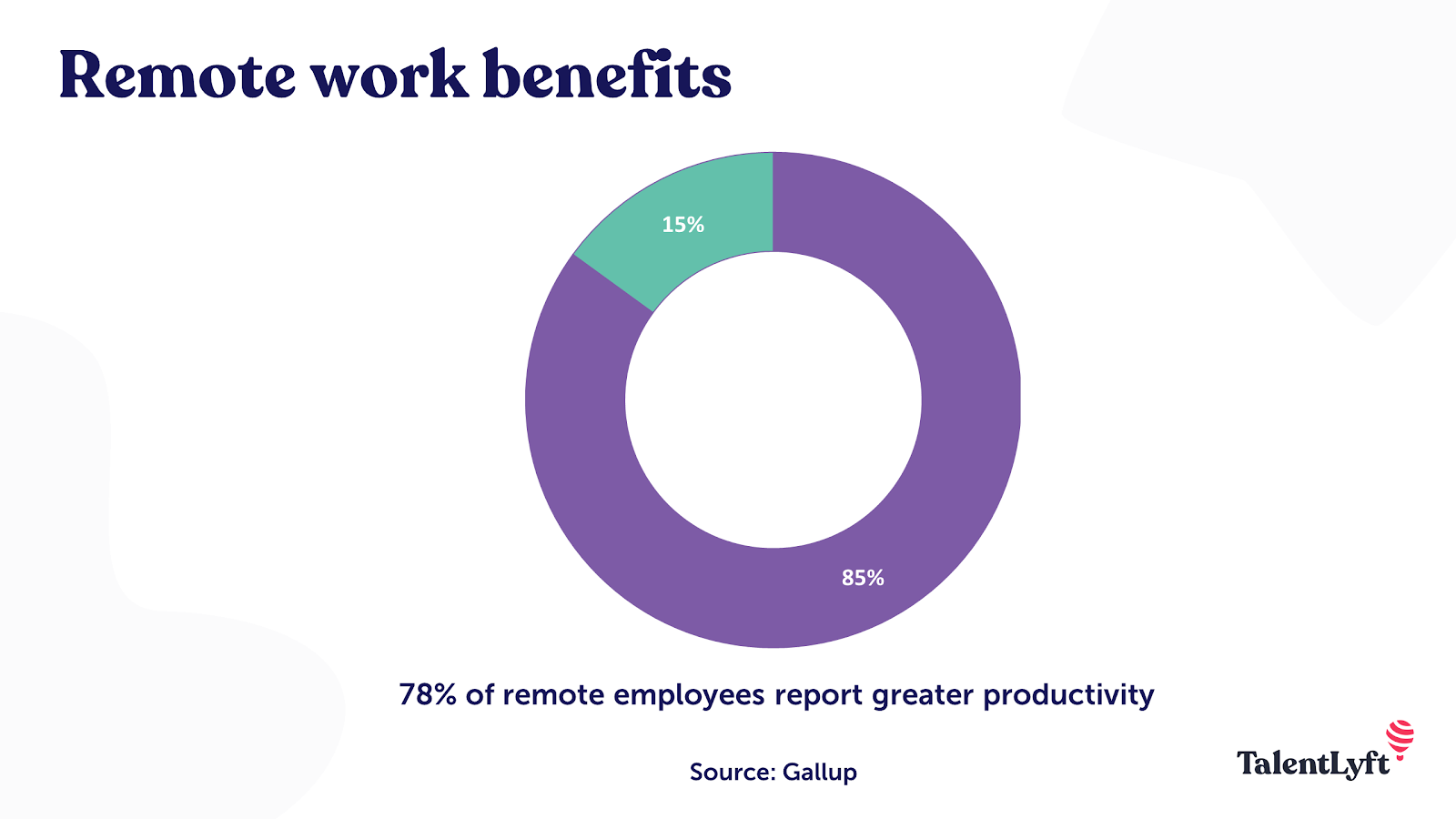
Perhaps especially pertinent to those working from home, allow them to take charge of their schedules and trust that although they may need to start later and make up the time, or be juggling child care with their partner throughout the working day, they will get the work done.
Allowing them this flexibility will help them feel more in control of how they choose to work, and trusting in them will take some of the pressure off. In turn, this is likely to increase productivity and happiness levels as they will not be stressed that they are unable to work as they normally would, and instead can find working alternatives.
Understand that current conditions may require a level of adaptability and a shift in expectations, often it is times like this when new creative ways of working emerge which can work better in the long term for employees and employers. Giving a sense of ownership and control to employees can be an enriching experience that allows them to juggle home life and work commitments more effectively, making for a happier workforce that still gets the work done.
Although you need to be understanding about the current situation, when it comes to hiring new staff, it is just as important to be thorough with your security practices. For any new workers starting, uCheck background checks would help make the process of screening job applicants as easy as possible.

Guideline #5: Make employees aware of mental health provisions
The pandemic will have had a significant impact on many people’s mental health. Those who were already dealing with specific mental health issues may have struggled more in this period, and others may be dealing with mental health issues for the first time due to the stress of coronavirus.
You have a duty of care to your employees, not only for their physical health but also to be aware and help with their mental health. Be considerate of how your returning workers may be affected. For example, send information to returning colleagues on the mental health provisions that your company offers and on what guidance and support are available if they are in need of help.
You can also direct them to organizations such as Mind that have various resources in place to help those struggling. Anxiety, stress and increased social isolation are bound to affect people’s moods and mental health. Providing them with the tools to focus on their wellbeing will help them to find ways of coping.
These methods and investment in looking after employee’s mental health will help everyone in the long run, ensuring employees are supported to feel the best they can and are in a good place to feel engaged and happy at work. Make sure to take care of your employees at the office, as well as those still working from home.

Having these resources in place, and fostering a supportive atmosphere at work where mental health can openly be discussed and is not stigmatized, will create a sense of openness and belonging. And in this period, having those resources in place will help with furloughed workers returning to and readjusting to work.
Guideline #6: Look out for heightened tensions
Be aware that emotions may be running high. Some employees returning from furlough may feel upset about being put on furlough when others in their team were not, and others in the team may have had an increased workload during this period whilst their colleagues have been furloughed. Watch out for any tensions that may arise and leave space for discussion before any of these issues escalate.
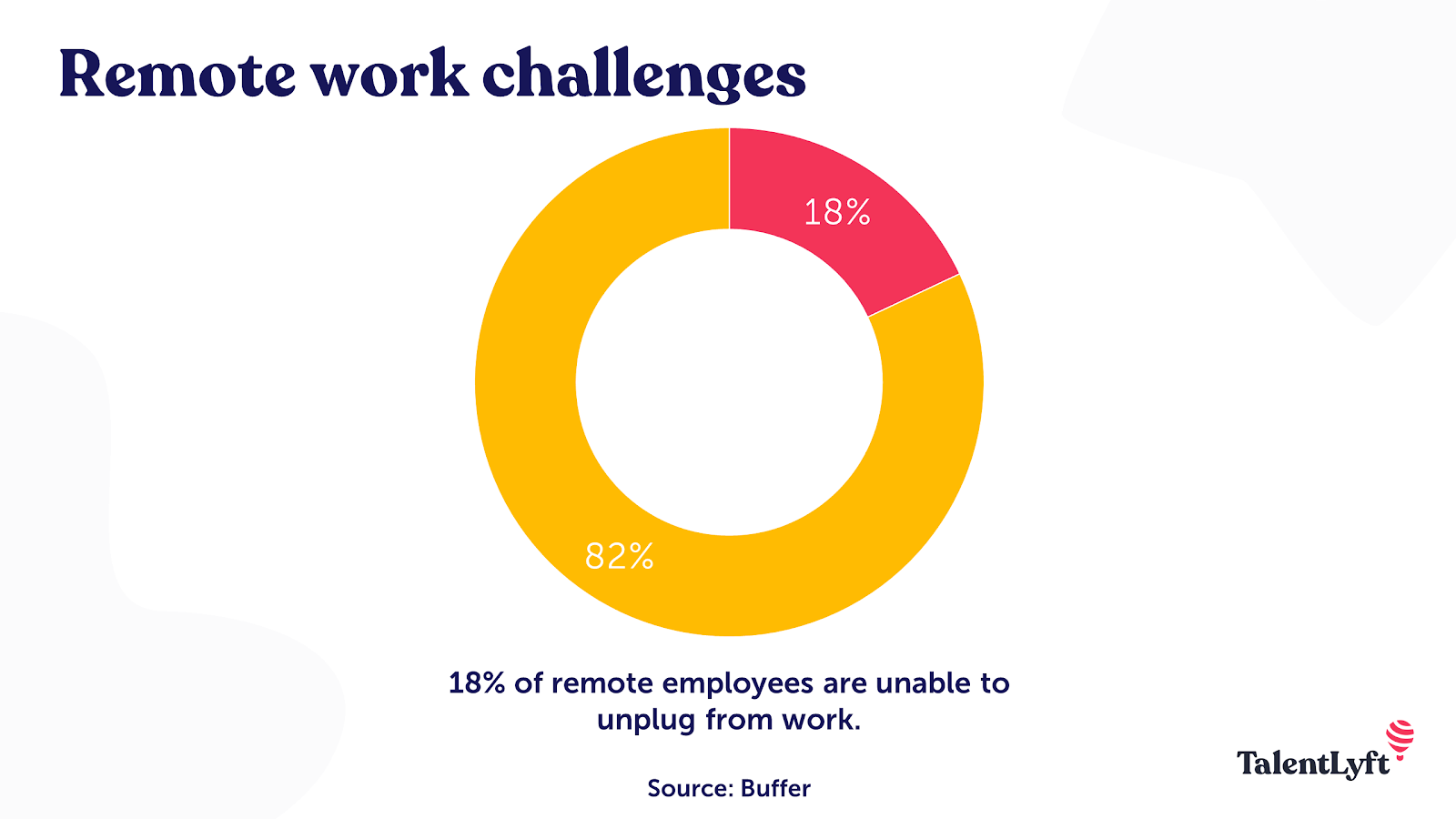
A simple thank you can often go a long way in showing people that they are appreciated for the work they have been doing, or for the way they have handled situations and circumstances. It is important to make workers feel valued, so anything you can do to make this known will help alleviate tensions.
As some workers will have been off for months, it may be worthwhile having a session where you bring returning workers up to speed, updating them on what’s been happening in the business whilst they’ve been away, and how they’re needed going forward to help support the business strategy.
This will give them time to readjust and see what they’ve missed, bringing them back into the fold and helping them feel part of the team again. This may negate any issues or tensions that may be present for returning workers and help them feel necessary and valued.
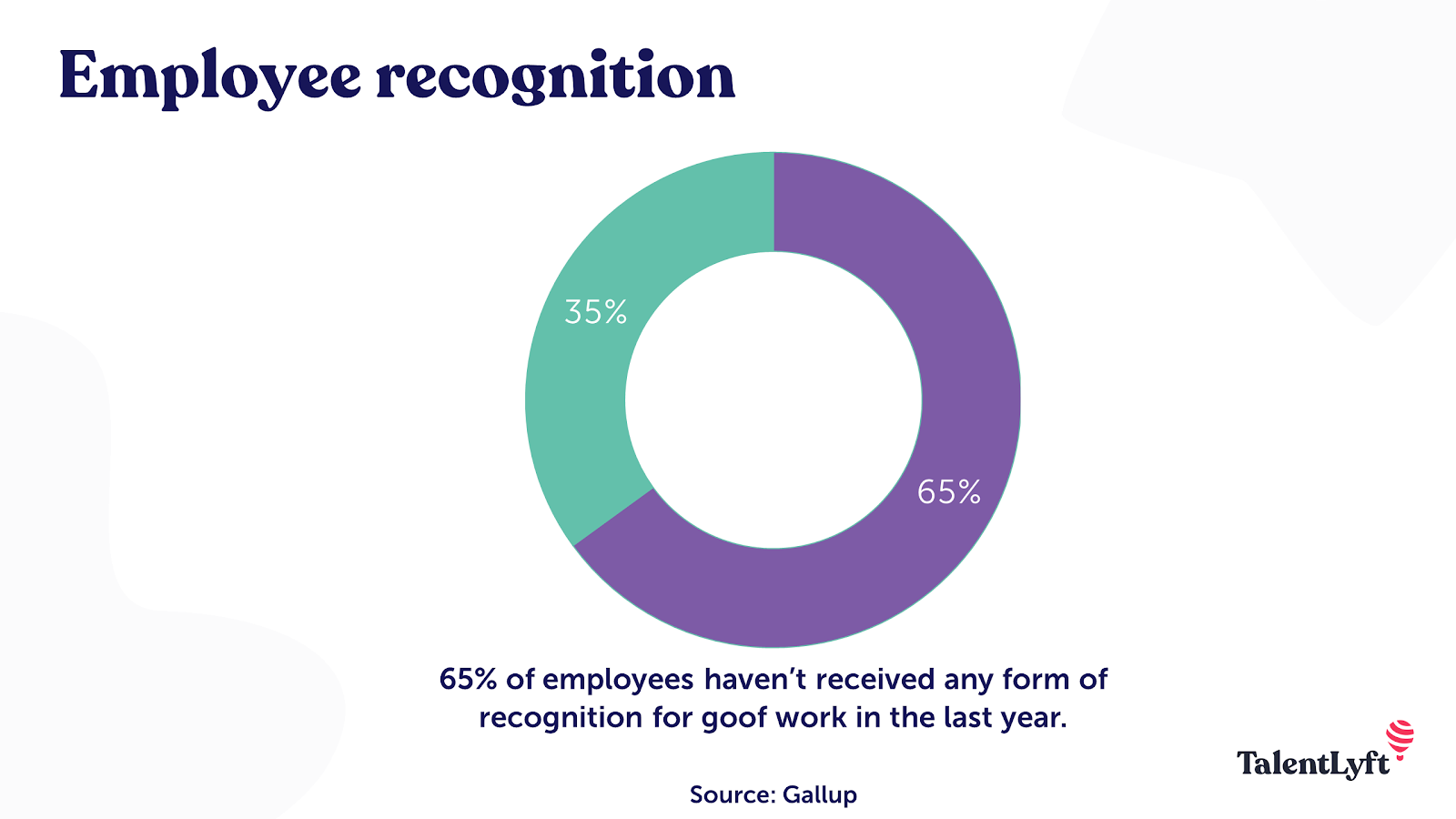
Help your employees settle back into working life
The world has changed, the way we operate in society has had to shift, and the working world has to adapt to this way of being too. For those workers returning from furlough, companies will have to help them settle back into working life, being considerate of the effect the pandemic has had on people’s mental health, circumstances and logistics of working.
Employees want to feel supported and cared for by their employers, there is a duty of care to ensure working environments are as safe as possible, and companies will be held accountable for the ways they have handled this pandemic.
Make sure you’re on the right side of history in your response and show workers that you are thankful for them and their service and committed to protecting them. That will go a long way in garnering respect and loyalty.
About the author
George Griffiths is the Managing Director of uCheck. He has been brought up to know the values of uCheck ever since his first involvement in the family-run business at the age of seven. In 2013, George came on board full time with the goal of working together to create a fluid and successful business development structure. His focus for the future is to drive the development of the uCheck groundbreaking HR Platform and continue to align his way of working with their mission statement – to always care about getting it right.
























